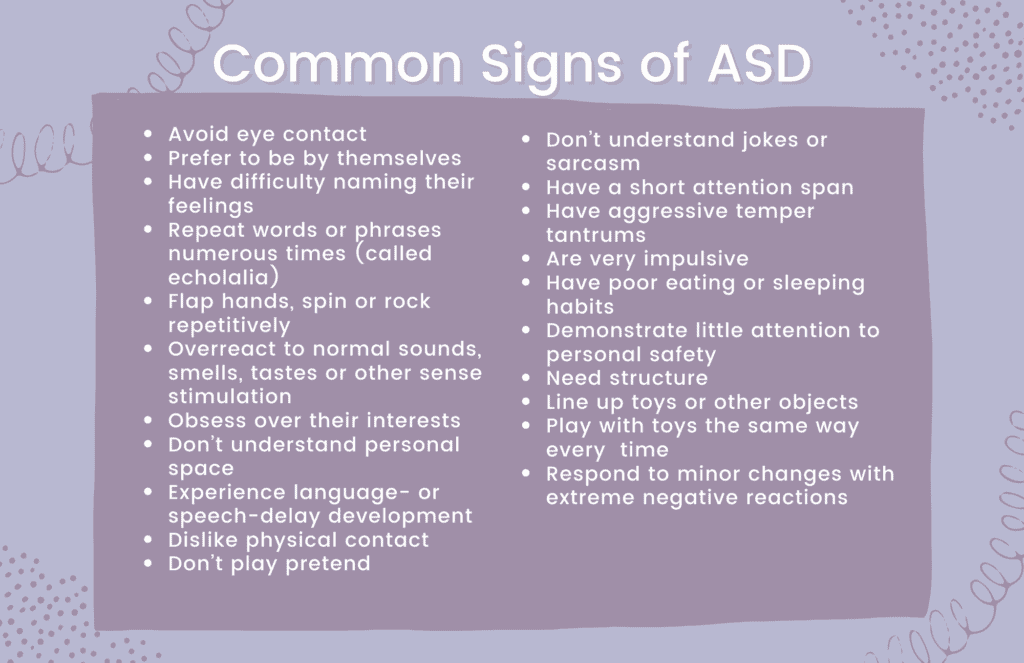
Teens Exposed To Pornography
Equip your teen to deal with the temptation and peer pressure related to pornography.

Here are some suggestions on how to guide your child with autism through the early elementary school years.
Estimated reading time: 6 minutes
When we decided to become foster parents, UMFS (a private foster care agency) told us during orientation teenagers made up the greatest placement need. We were expecting to foster teenagers, but our first placement ended up being for a three-year-old girl with autism. Autism in elementary school can look very different from autism in teenagers.
While we were seasoned parents—our own four biological children ranged in age from 11 to 17 at the time—we had relatively little personal experience with a child on the autism spectrum. We did say yes to Nancy (not her real name), and were thrust into the world of autism in the blink of an eye.
According to estimates from the CDC’s Autism and Developmental Disabilities Monitoring (ADDM) Network, around one in 44 children have been identified with autism spectrum disorder (ASD) in 2021. ASD occurs in children across all racial, ethnic, and socioeconomic groups, and is more than four times more common among boys than girls, according to the ADDM.
That means, chances are your child might have autism or you probably know a child who does. While diagnosing autism should be done by a developmental pediatrician, child neurologist, child psychologist or psychiatrist, or similar medical professional, there are specific indicators or behaviors children in elementary school perform regularly that could mean they are on the spectrum.
One note of caution: a young child could exhibit any of the following indicators and not be on the autism spectrum. However, a child with autism will frequently have many of these behaviors, with varying degrees of intensity.

In Nancy’s case, she initially “talked” to us by repeating the same question over and over and over again (echolalia). Once, one of our kids counted her asking, “How are you doing?” 50 times in a row. She also rarely played with toys and developmentally acted like a toddler rather than a preschooler. However, Nancy was very affectionate, loved to snuggle and slept like a rock—a very mixed bag of behaviors.
If your youngster has received an autism diagnosis, take heart. God made your little one exactly right—and in His image (Genesis 1:27). Overall, remember, your son or daughter is still a child and will act like a child. A diagnosis of autism doesn’t mean your child won’t or can’t experience all the joys of childhood—it means they will experience them differently or at different age stages than their peers. Preschool and elementary school can be challenging for kids on the autism spectrum, but with parental support, these children can thrive and grow like their peers.
Here are some suggestions on how to guide your child with autism through the early elementary school years.
One excellent resource to get you started, especially if your child is not of kindergarten age yet, is your local school system.
In Fairfax County, Va., where we live, the school system offers preschool and early education opportunities especially geared toward children with autism. Our current foster child, a four-year-old nonverbal developmentally delayed boy, doesn’t have an official diagnosis yet, but is enrolled in our local elementary school’s preschool autism classroom. Don’t overlook tapping into those school resources as soon as you suspect or have an ASD diagnosis for your child.
Talk to your children’s medical and school professionals to come up with a plan to guide your child through the early elementary school years. Think about your child’s strengths and weaknesses, which behaviors cause the most problems at home or at school, what skills does your child lack, how does your child learn (visually, auditory), and what brings your child joy.
No one will understand you better than another parent of a child with autism—and the same is for your child with ASD. Don’t isolate yourself by befriending only families living with autism, but definitely include those parents and kids in your support circle. You will find it invaluable to share information about services and therapies, as well as have a safe space to vent or cry.
Your child with autism will crave structure, so employ simple routines for mornings and evenings. Also remember this kid is less able to handle changes to these routines on the fly, so bank extra time to prepare them. For example, with our foster daughter, Nancy, we needed to discuss a schedule change over the course of a few days to help her adjust mentally before the switch happened.
Kids with autism, like most children, develop obsessions with a particular toy or categories of toys (like dinosaurs or cars). Give them space at home to be themselves. Sure, it might get old to have your kindergartner only want to play with plastic dinosaurs, but it’s really okay to allow them to have that singular focus in your home.
One of the best ways to help your child with autism is to role play scenarios. This can help them become comfortable with different environments. I recommend doing this with all young children, but especially with those on the spectrum. Make a game of learning how to handle a new situation each month. For example role play going to a store, visiting grandma, going to the doctor or eating in a restaurant. While you can’t prepare for every contingency, making a concentrated effort to tackle the most frequent situations will help everyone enjoy the outing better.
Giving your child with ASD strategies for coping with unexpected changes will help them through those situations. Because kids with autism can exhibit explosive responses, learning how to calm down is an important skill. You’ll likely need to try out different calming techniques. You can try breathing, yoga, essential oils, or a quiet room with to discover what works for your child.
For example, various breathing techniques helped Nancy calm down when she became volatile. With practice, Nancy would even employ the breathing exercises on her own without prompting. An excellent children’s book to teach kids how to breathe in different circumstances is Breath With Me by Mariam Gates.
Some kids with autism can’t handle loud noises, while others have trouble wearing scratchy fabrics. If your child has sensory issues, find ways to accommodate them. An example of this is having noise canceling headphones your child can wear in public. Another could be using soft cotton clothing without labels.
Depending on where you live, you might find wonderful options for your child with autism. This can include day camps in the summer and sports tailored to fit your child’s needs. Our current foster placement will attend a therapeutic gym camp this summer. This will be beneficial to him socially and educationally, as well as just plain fun.
Kids on the spectrum usually respond well to external rewards. Develop a system of providing positive reinforcement for following the rules, finishing schoolwork, or completing chores.
Use these suggestions as stepping stones to help you and your child adjust to the world of autism. Through role playing, structure, coping methods, and rewards, you can give your elementary school age child with autism a good foundation from which to build. Don’t hesitate to reach out to your local school, medical professionals, and autism/therapeutic organizations for help. For more on autism in elementary school age kids, visit Autism Speaks.